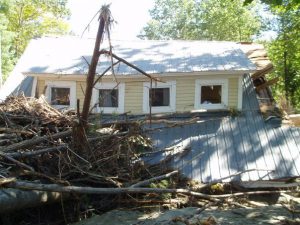
The profound devastation caused by Tropical Storm Irene continues to inspire lessons in recovery. This commentary was originally broadcast on the stations of Vermont Public Radio on the second anniversary of the storm.
On the morning of Sunday, August 28, 2011, I pulled on a pair of boots and walked out into the rain. The Rock River roared, and not just because it was swollen and swift, but also because the
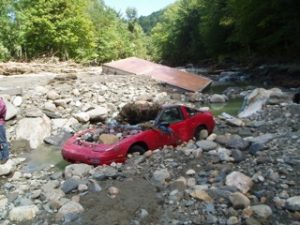
rocks which give the river its name were bouncing along in the current, causing the earth to shake.
Most of the time, this watercourse is more rock than river, but during Irene, the water barely cleared the cement arch bridge. Through some miracle of hydrodynamics, uprooted trees bouncing in the current all cleared this narrow passage. It would have taken only one to start a logjam and take out the bridge.
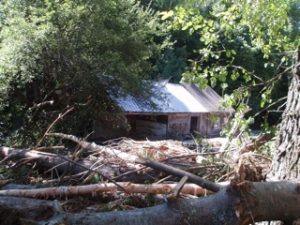
Logjams caused the Rock to jump its bank upstream, where it destroyed about a half-dozen homes as well as the Dover Road, where the scars of the storm are still evident. What was once a row of well-kept homes now resembles a mouth of rotten and missing teeth, and a few piles of debris have become permanent features of the landscape.
The river itself is also changed, right down to the swimming holes. It wasn’t just a matter of the river still appearing raw and scarred from the storm that kept
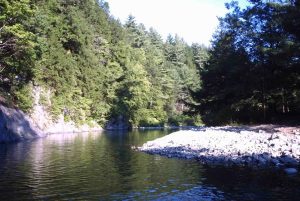
me from swimming there last summer, but also the new and unfamiliar arrangement of rocks and pools. The river was so changed, I didn’t like it.
This summer has been different. In part, it was simply so hot in July that survival demanded full immersion. This summer, the debris marking the high-water line of the storm seems improbable, and I wouldn’t believe this tame stream ever
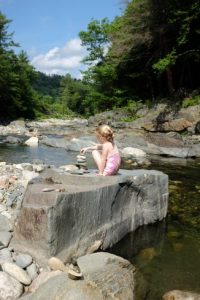
Greg Croteau, photo
raged so high had I not seen it with my own eyes.
But I did see it. I saw the trees and fuel tanks bobbing down river and the remains of the houses the river flowed through and then washed away. All last year, I saw what was missing, what was damaged, and what was lost. I saw the barren fields and bleached stones where roads and riverbanks were rebuilt.
Now, vines and seedlings are taking root along the riverbank; even the logjam at the upstream end of the millrace is bleached and shrunken.
On the storm’s second anniversary, instead of lamenting what water features were washed away, I’m discovering new, Jacuzzi-like rapids and sandy-bottomed pools in which to soak in water that’s once again running clear.
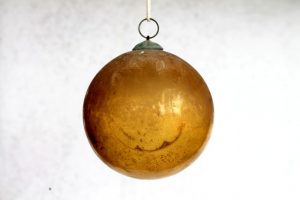
Returning to the river has been a lesson in the process of change, including overcoming resistance to it. Meditating on moving water rewards me with all kinds of metaphors for navigating the rocky river of my life. And just the other day, when I made my regular pilgrimage to the Rock River beside which I live, I found a golden Christmas ornament nestled among the rocks and perfectly intact. If this delicate globe could survive the Rock River during a storm, it gives me hope that no matter what life’s current brings to me, so can I.
Click here to listen to the original broadcast over the stations of Vermont Public Radio on August 20, 2013.

Even though I’m attempting a through-hike of Vermont’s Long Trail, you can still receive An Essay Every Wednesday emailed directly to your inbox – just subscribe. It’s easy: enter your email in the subscription box and then confirm your subscription. It’s entertaining, educational, and it’s free.
It’s hard to believe that it’s been 5 years since we were visited by Irene. What an unforgettable event. It affected so many lives.
I loved your metaphor of the survival of the golden globe.
Life has it’s stormy times and it teaches us to be good navigators if we allow it.
Thank you for your stories Deb.
Nature is recovering, and it seems as if we’ve returned to our new normal. Part of me misses the enormous sense of community we had when we had to depend on one another to pick ourselves up and rebuild. Remembering Irene helps me remember gratitude and kindness.
Thanks for your kind words. – Deb.